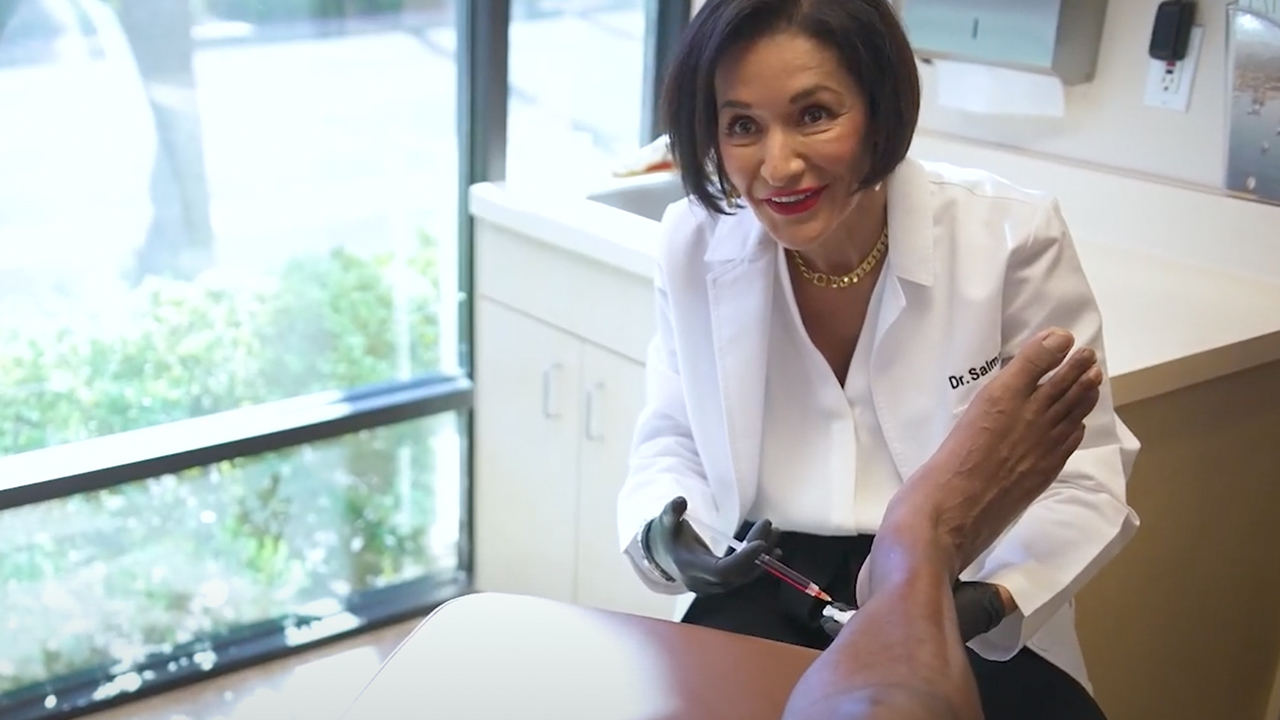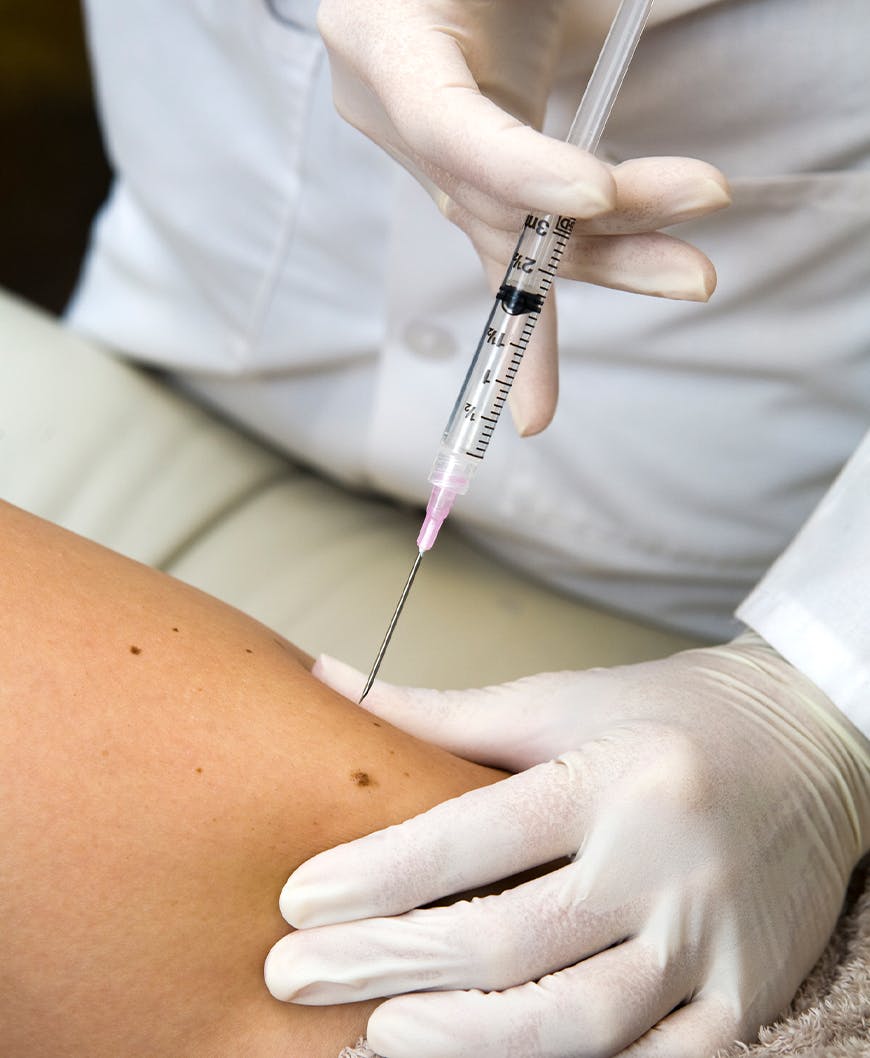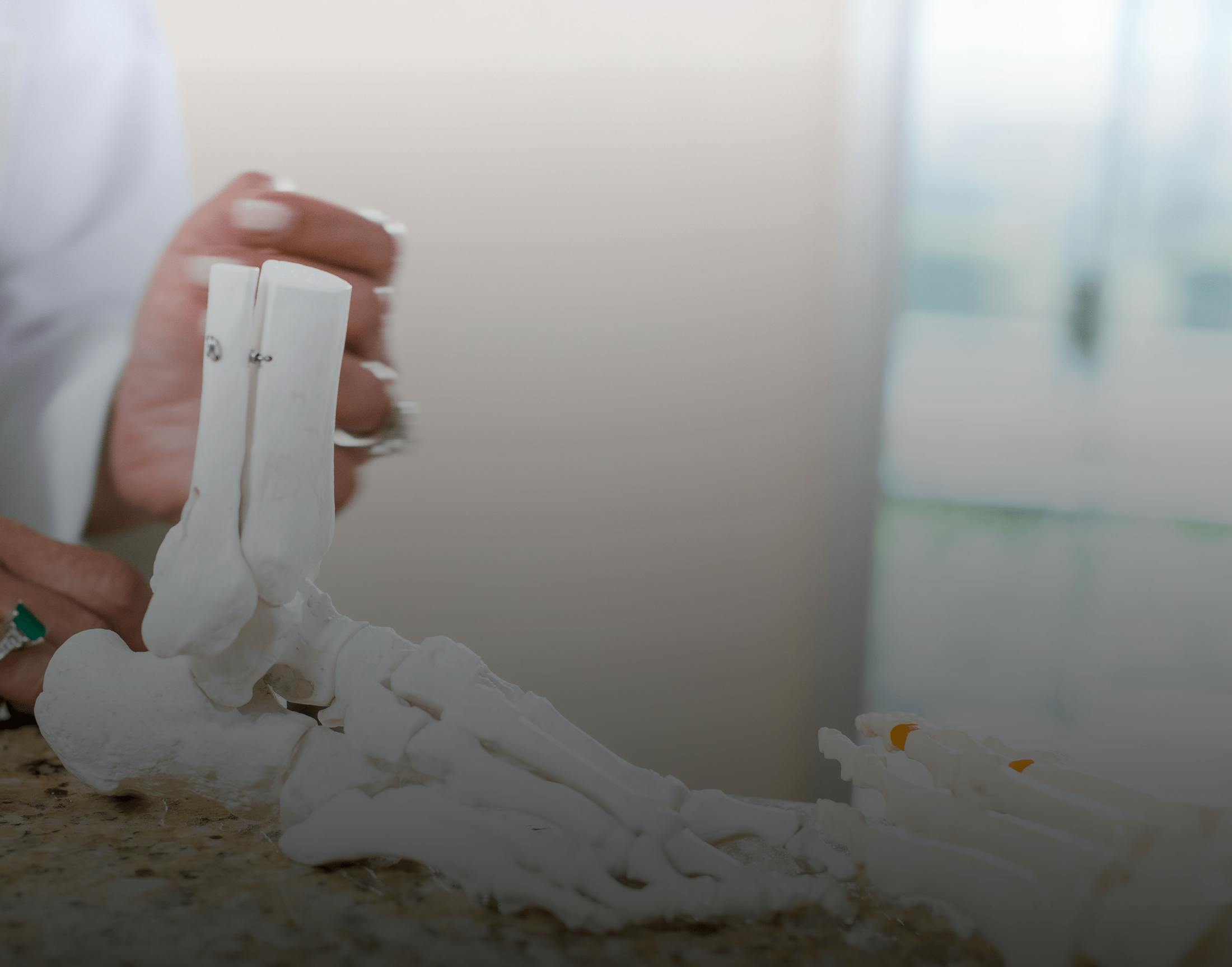Podiatric injections — a PRP foot therapy prepared from a portion of the patient’s own blood — can be used to promote the healing of soft tissues around joints, and may also benefit patients with conditions affecting their feet.
Which Types of Foot Injuries May Benefit?
Besides the conditions mentioned above, podiatric injections may also benefit patients with other foot injuries and conditions that typically affect tissues, including:
- Plantar fasciitis
- Foot and ankle pain not responding to other treatments
- Ankle sprains
- Pain from arthritis affecting joints and tissues in feet
- Ligament damage affecting foot/ankle stability
- Non-healing diabetic foot ulcers
- Achilles tendinosis
- Partial tendon tears
- Arthritis in the ankle











